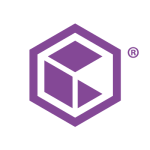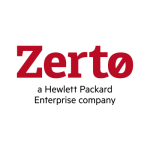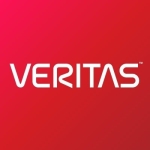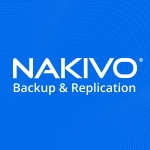What is our primary use case?
The solution is primarily used for backup and restore and also for DR, for Data Recovery in case of a disaster. We are using replication from two servers, the Spectrum Servers, so they replicate on each other. We are using it for backing up remote sites also. Basically, all the machines are downloading their backup to the Spectrum Server and from then on we are moving that data to tape units so we can have outside data of the building.
How has it helped my organization?
IBM allows for the versioning of the data, allowing us to have multiple versions of a file or directory of a server.
What is most valuable?
One of the main things that I like about IBM is the versioning of the data - meaning that we can have multiple versions of a file or directory of a server. I could have 10 versions of one file and that file I could keep for as long as I want.
There is the archive for a version of the solution which gave us the opportunity to have, let's say, one full backup every month for a long period of time. Its archiving offers us good flexibility.
The solution is very stable.
We've found the scalability to be very good.
The initial implementation is straightforward for the most part.
What needs improvement?
The pricing is a bit high. It would be ideal if it was more affordable.
Generally, everything is changing so fast within the product, it's hard to pinpoint what needs to be changed or what is missing. The solution is constantly evolving.
It would be helpful if the solution included some sort of ransomware protection.
The only thing that I haven't tried yet is using it with VMware. I haven't done any tests on it. Let's say that I want to restore a VM, virtual machine, and I would like to access it in a short period of time. This is something that Veeam, for example, is doing. Veeam will permit you to start a VM and start working with it and restore only what is needed to do a prompt work. If it's possible to have the same functionality on this product, that would be ideal.
For how long have I used the solution?
I've been using the solution since it was called under a different name. I've used it for about 20 or so years at this point. It's been two decades. It's been a while.
What do I think about the stability of the solution?
The solution is very stable. There are no bugs or glitches. It doesn't crash or freeze. Its performance is excellent.
What do I think about the scalability of the solution?
The scalability of the solution is very good. A company can expand the solution if it needs to.
IBM Spectrum is used in the data center and we don't have too many users that would use the backup facilities. Everything is centralized to enter the data center.
We are not fully using the solution to its full potential at this time. I'm not sure if there are plans to increase usage. We're looking into other options to see if we can get better user-friendly functionality and better pricing.
How are customer service and technical support?
We've been in touch with technical support. They are very good. We haven't had any issues with them. They are helpful and responsive. Every time I've talked to them, they've solved our problems.
Which solution did I use previously and why did I switch?
We also currently use Veeam.
How was the initial setup?
The installation is simple. You just click and follow the instruction. Where the complexity is coming up is when you decide how you want to do your backup and restore. Like any other software you have to decide how you want to do it and understand what's going on behind the scene.
The deployment itself, with my experience, doesn't take long due to the fact that I know the product. That said, for someone that does not know the product, I would say, it will take, just to understand how it works about a week.
We have two or three people on staff that can handle any maintenance required. They are all systems administrators.
What about the implementation team?
In the beginning, we had a consultant as it was a very long time ago and we did not have the knowledge we have now. However, today I would not deal with anybody from IBM. We have the capabilities we need.
In general, at the time, we had a good experience working with them.
What's my experience with pricing, setup cost, and licensing?
While it's my understanding that the solution is expensive, I do not directly handle the licensing and therefore cannot speak to how much the company actually pays to use the solution.
What other advice do I have?
We are customers and end-users.
We have the Enterprise version of IBM Protect. It's not the Plus version.
My advice is not specifically for IBM Spectrum, but for any product. I would say, sit down and think about it. Think about what you want to do. There are so many options in any software. It's like getting house insurance. What do you want to do, how do you want to insure your data? It's important to understand what you want so you can see if the solutions you are looking at actually have the required capabilities.
I would rate the solution at an eight out of ten. It's a very good product. It's strong. It's stable. The company's good.
Which deployment model are you using for this solution?
On-premises
Disclosure: My company does not have a business relationship with this vendor other than being a customer.













